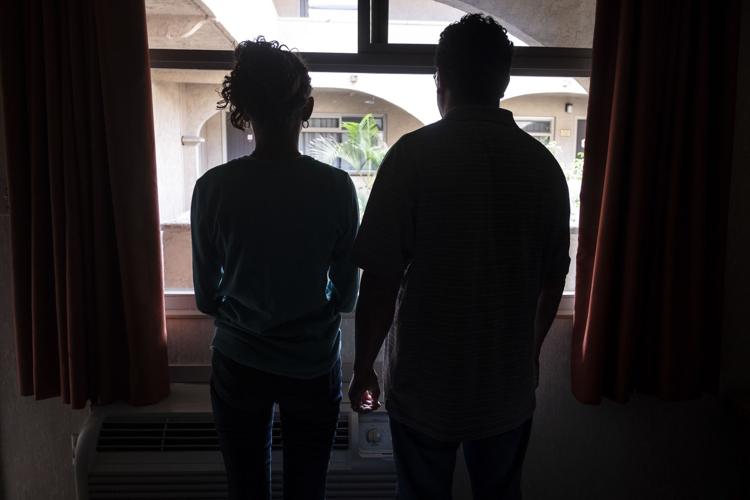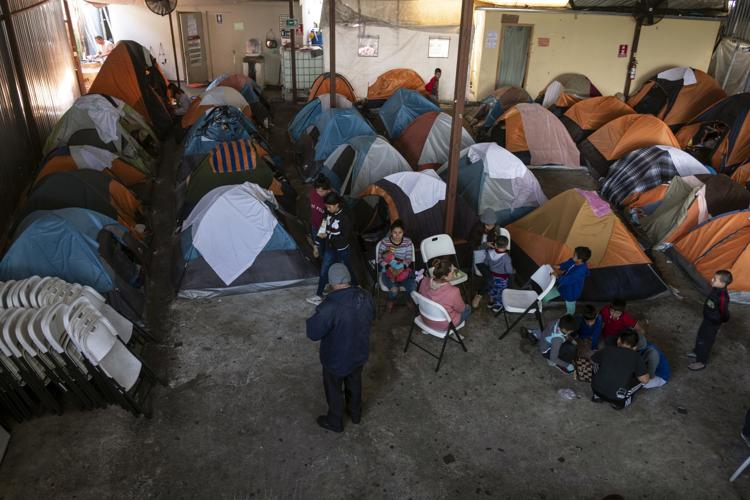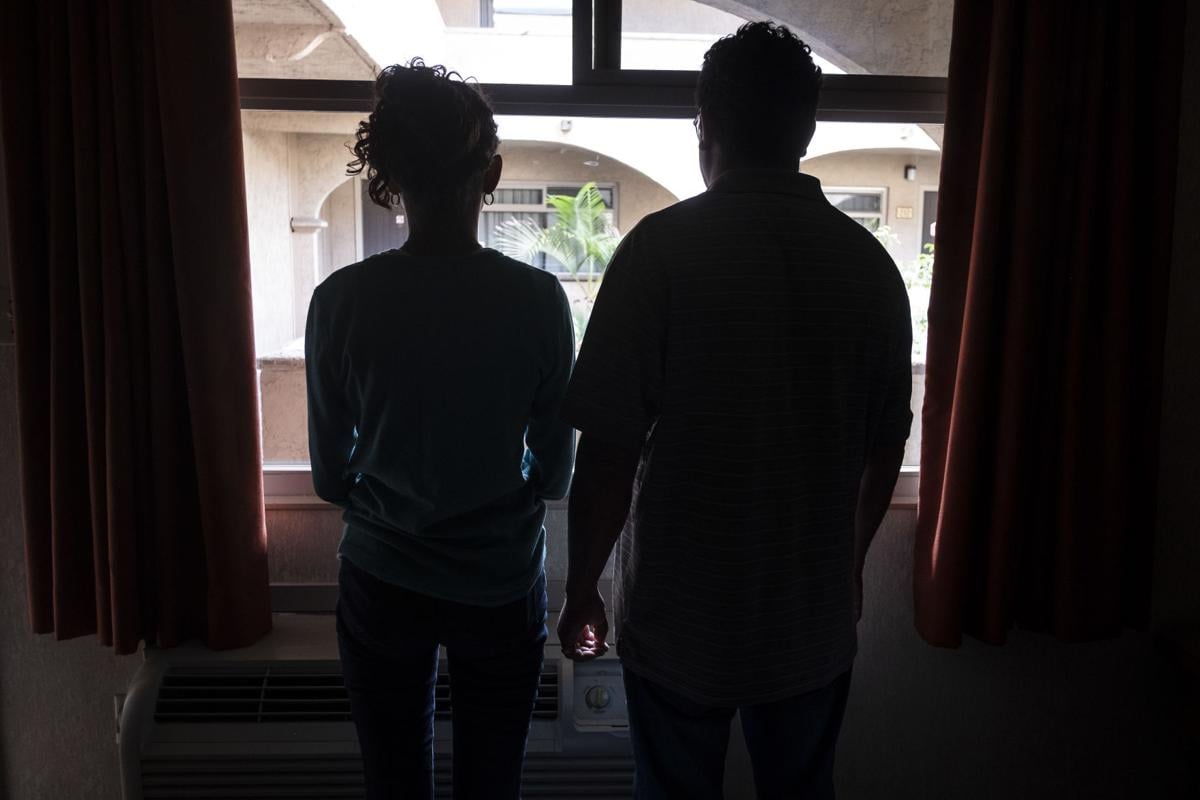MEXICALI, Mexico — When I met Santos Yovany Membreño, he and his daughter Astrid Estephany were passing another eerie evening at the Hijo Pródigo migrant shelter in Mexicali.
Some residents were lying on mats along the outer edge of the vast room, a former movie theater with all the furniture cleared out. Others hung out by the front entry, where unfinished wooden chairs and bird cages for sale crowded the doorway.
That’s where I saw the father and daughter and asked if I could talk with them.
On that November night last year, and through a series of meetings and phone calls with them, I learned some Honduran asylum-seekers are supporters of President Juan Orlando Hernandez and his National Party. In fact, Membreño blames their flight on his political affiliation.
“The president is protected, but we aren’t,” he said.
Membreño is a longtime member of the party and was working for Hernandez’s signature social program, called Vida Mejor, or Better Life. It’s intended to help the poorest Hondurans with simple works: Roofs for their houses, new windows, concrete for dirt floors, that sort of thing. Opponents accuse the government of using the program to reward loyalty or buy votes.
“We would go to the poorest people’s houses and see what they needed,” he said.
For 2½ years, Membreño wore the blue vest of the Vida Mejor employee, documenting needs and sending them in to the authorities for approval. Among the aims of the program was to keep people from leaving the country as migrants.
It ended up turning Membreño into one.
Around the angrily contested election of 2017, people began harassing him about his work, he said. Over time, the threats built.
“They threatened us with death because they were from other political parties,” he said.
The threats accumulated, often by text.
“One day I went to work and they took my photo from a motorcycle,” he recounted. “They said they were giving me one day to get out of the country.”
Eventually he did, bringing his 13-year-old daughter with him, while leaving his wife and two other children at home.
Astrid Estephany told me harrowing stories of their journey across Mexico, riding the freight train known as “La Bestia.” Once, the two of them were split up on either side of a train that started moving and barely managed to reunite.
The worst incident was one night riding on the roof of a train.
“We were riding the train cars up on top. The train started braking,” she recalled. A man near them “was sleeping, and then he stood up to see his wife. He fell and got his leg cut off.”
Accidental amputations and other serious injuries are not uncommon when migrants ride through Mexico. Neither are robberies or rapes.
On the train and in the shelter, Membreño never left Astrid Estephany alone, taking her to work when he found a day or two of painting or helping with construction.
“In the shelter I don’t sleep, or I sleep fearfully. I keep her in an embrace,” he said in November.

Fotos por Guillermo Arias / para La Estrella de Tucsón
El refugio Juventud 2000 en Tijuana, México, coloca a los solicitantes de asilo en tiendas de campaña mientras esperan sus audiencias en la corte al otro lado de la frontera en San Diego.
It wasn’t just the normal threats to a 13-year-old girl. Other Hondurans were in the shelter, and some were from opposing political factions or affiliated with gangs, Membreño said.
When speaking at the shelter and wanting to say the name of the program, he always lowered his voice and whispered “Vida Mejor.” The fear was palpable.
The day after we met in Mexicali, I went to Tijuana for more reporting. Two days later, it turned out, the two of them were scheduled to travel to Tijuana for a court hearing the following day in San Diego.
In pre-pandemic times, the day before court hearings a group called Border Kindness was taking asylum-seekers to a hotel in Tijuana so they could get up early and cross the border for their hearings at immigration court, always accompanied by U.S. officials as they made the crossing.
In the Tijuana hotel room, they relaxed a little. There was comfort and privacy — a universe apart from the intimidating shelter.
The next day, coincidentally, I, too, was headed to San Diego to do a couple of interviews and then drive back to Tucson. So I went to watch Membreño’s hearing and ended up playing a part in a stroke of good luck.
I had interviewed attorney Bashir Ghazialam just before Membreño’s hearing, and the attorney and I both went upstairs for business at the court. When Membreno’s hearing was over, before he and Estephany were hustled back to Tijuana, I introduced Santos Membreño to Ghazialam. The lawyer took his case.
A few weeks later, at Membreno’s next appearance, Ghazialam won them entry into the United States through a legal maneuver that involved the Mexican government refusing to accept Santos and Astrid Membreño back into the country because they had no future dates at U.S. immigration court.
The two of them spent about a week in a Customs and Border Protection detention center, then were released in San Diego pending the outcome of their asylum claim.
Since December they have been living in the Cincinnati area with family friends.
Due to the slowdowns caused by COVID-19, they are still awaiting the outcome of their case.
If he’s ever able to make a claim, it will come with a twist. Unlike many of his compatriots in the asylum system, it involves working for the government, not protection from it.






